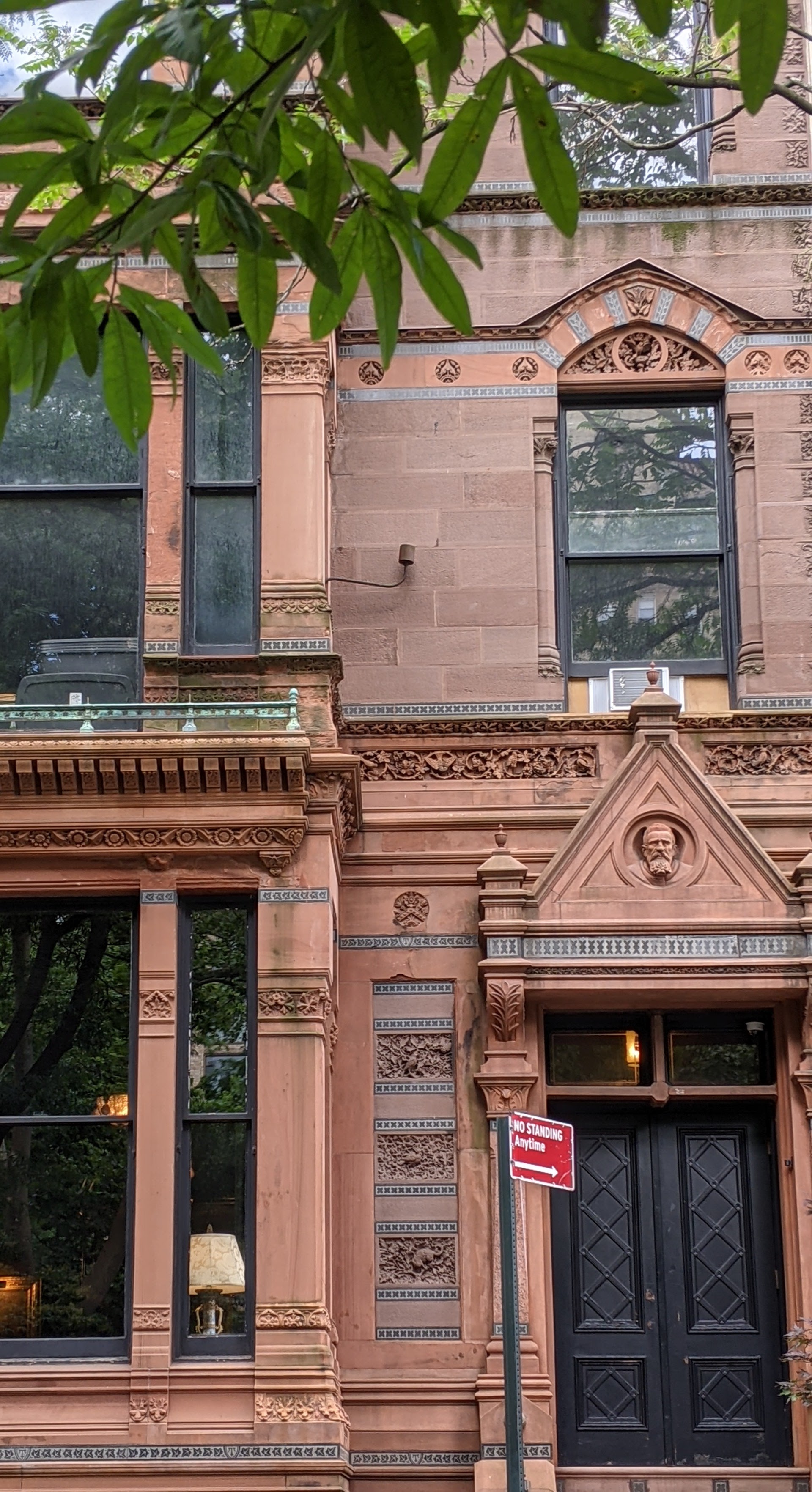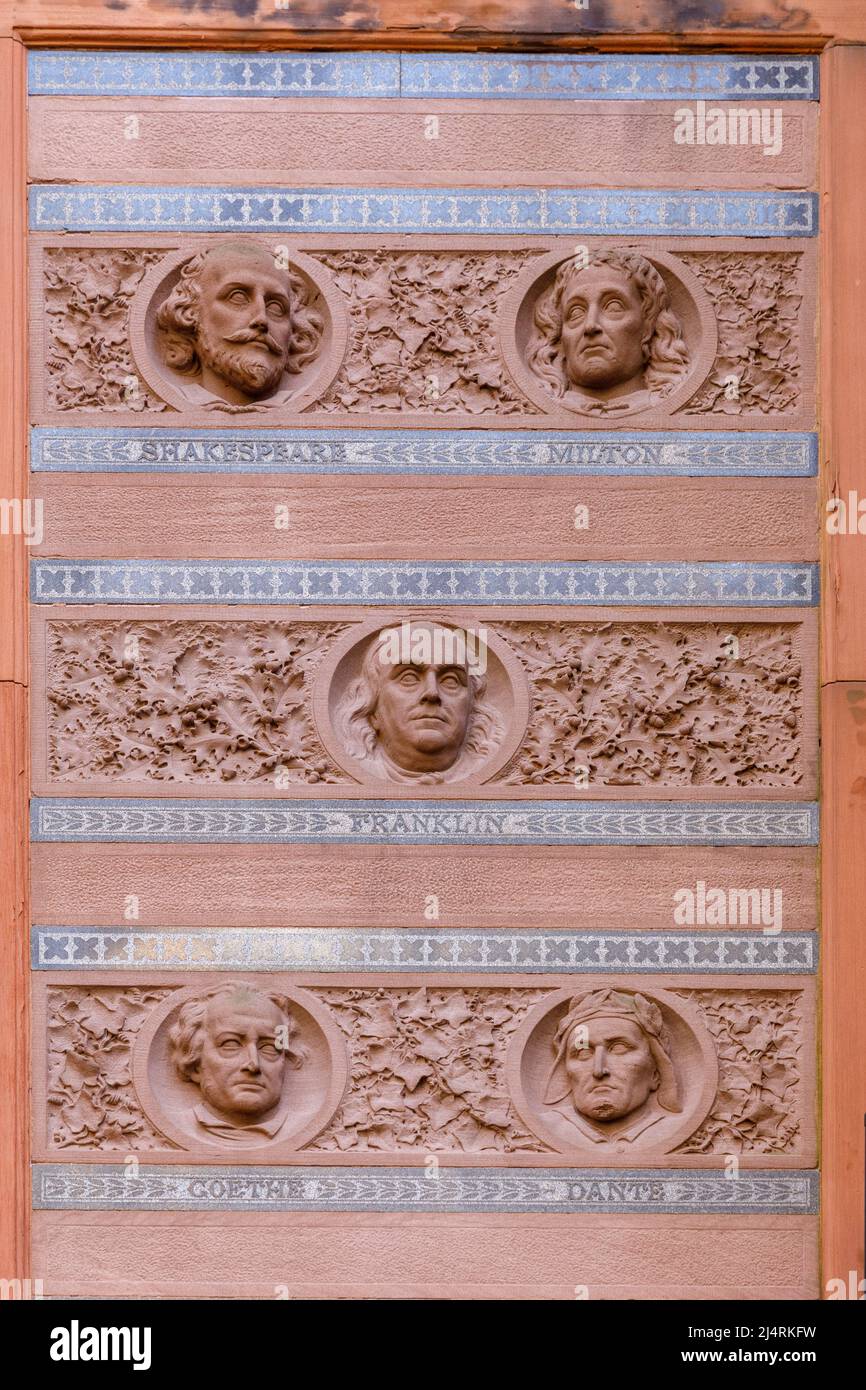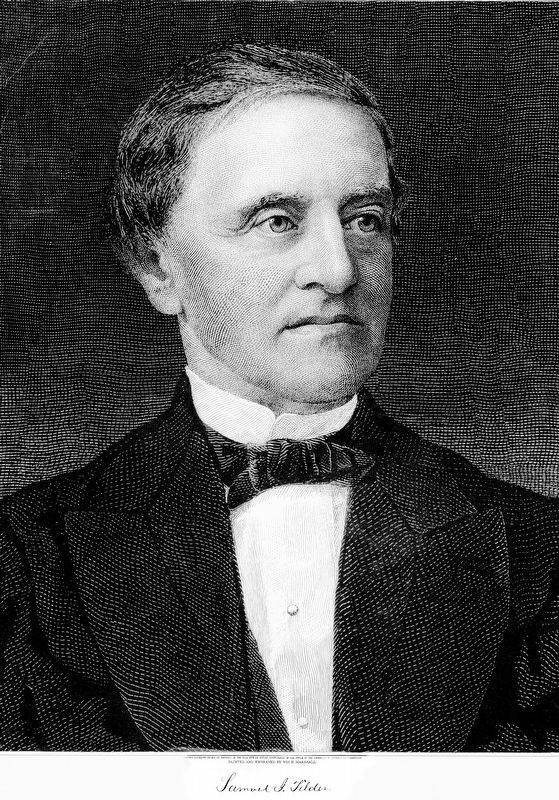2022 Samuel Jones Tilden American politician served as t… Flickr

Stairs of Samuel J. Tilden House, a Landmarked Victorian Gothic Revival Brownstone at 15
A contested presidential election. The Compromise of 1877 resolved the tumult that had arisen following the 1876 presidential election. In that election, Democratic candidate Samuel J. Tilden of New York won 247,448 more popular votes than Republican Rutherford B. Hayes of Ohio. But the electoral votes in the three southern states of Florida.

For Find Out Friday Who Was Samuel J. Tilden?
The Samuel J. Tilden House is a historic townhouse pair at 14-15 Gramercy Park South in Manhattan, New York City. Built in 1845, it was the home of Samuel J. Tilden (1814-1886), former governor of New York, a fierce opponent of the Tweed Ring and Tammany Hall, and the losing presidential candidate in the disputed 1876 election. Tilden lived.

Flashback All the twists and turns of the election of 1876. Spoiler We came close to major
The Election of 1876. The morning of Monday, March 5, 1877 was cold and overcast as Americans anticipated the Inauguration of Republican candidate Rutherford B. Hayes after a long, tense, and disputed election. Hayes' narrow win had only been decided three days earlier, defeating Democratic candidate and New York Governor Samuel Tilden by.

Kentucky Travels Samuel J.Tilden House in Gramercy Park in New York City
1876's Parallels Hold No Comfort. Eerily, we've trod this path before--124 years ago. In 1876, the Democratic candidate for president, Gov. Samuel J. Tilden of New York, was certain he won Florida.

Samuel Tilden PSA AutographFacts™
The basic outline of events after Election Day, November 7, 1876, is familiar. The Democratic candidate, Governor Samuel J. Tilden of New York, had carried a majority of the popular vote, and by the morning after the election he had 184 of the 185 electoral votes necessary for a majority.[1]

Presidency of Samuel J. Tilden Sumner's Legacy r/Presidentialpoll
In 1863, Tilden moved into a home on Gramercy Park. He combined that house with an adjacent townhouse in 1874 to form a mansion where he lived for the remainder of his life. The mansion has been the home of the National Arts Club since 1905. By 1868, Tilden had assumed the leadership of the Democratic Party in New York State.

Tilden Mansion Victorian facade and political scandal PortableNYC New York history
Samuel J. Tilden, (born Feb. 9, 1814, New Lebanon, N.Y., U.S.—died Aug. 4, 1886, Greystone, N.Y.), lawyer, governor of New York, and Democratic presidential candidate in the disputed election of 1876.. Tilden attended Yale College and the University of the City of New York for brief periods and studied law. He began to practice law in New York City in 1841.

NY Samuel J. Tilden House NHL A historic townhouse pair, … Flickr
Samuel Jones Tilden (February 9, 1814 - August 4, 1886) was an American politician who served as the 25th governor of New York and was the Democratic nominee in the disputed 1876 United States presidential election.. Tilden was born in 1814 into a wealthy family in New Lebanon, New York.Attracted to politics at a young age, he became a protégé of Martin Van Buren.

The Samuel J. Tilden House Designated a New York City land… Flickr
Governor Samuel J. Tilden of New York. Samuel Jones Tilden was a leading political figure of the 19th Century. He served as Governor of New York State and was the Democratic candidate for president in 1876, perhaps the most unusual presidential election in United States history. Born in 1814 in New Lebanon, NY, Tilden was educated at what later.

Samuel J. Tilden House, a Landmarked Victorian Gothic Revival Brownstone at 15 Gramercy Park in
In 1876, a decade after the U.S. Civil War, Republican Rutherford B. Hayes competed against Democrat Samuel Tilden in a bitterly contested presidential election. Ultimately, Congress appointed.

Kentucky Travels Samuel J.Tilden House in Gramercy Park in New York City
The Samuel J. Tilden House at 15 Gramercy Park South, where he lived from 1860 until his death is now used by the National Arts Club. Legacy. Samuel J. Tilden was an important U.S. politician during his lifetime. He held several notable offices, but he is best known for his loss to Rutherford B. Hayes in the 1876 presidential election. The.

2022 Samuel Jones Tilden American politician served as t… Flickr
The election of 1876 was intensely fought and had a highly controversial outcome. The candidate who clearly won the popular vote, and who may have won the electoral college tally, was denied victory. Amidst accusations of fraud and illicit deal-making, Rutherford B. Hayes triumphed over Samuel J. Tilden, and the result was the most disputed.

Exterior, honoring giants in Arts and Letters, National Arts Club, in the Samuel J. Tilden House
In 1879, Samuel J. Tilden, a former governor and failed presidential candidate, rented Greystone from John Waring and bought it soon thereafter. Tilden was the first resident at Greystone to be actively interested in horticulture and during his time there built thirteen greenhouses - both for ornamental plants and for fruit and vegetables..
/SamuelJonesTilden-58ecf3fe5f9b58f11911ec15.png)
Election of 1876 Hayes Became President
Samuel J. Tilden was a popular national figure during the 1870s as he successfully fought against political corruption in New York and became the Democratic presidential candidate in the 1876 election.. Living with an aunt who owned a boarding house, Tilden ended up spending most of his time running her business as well as handling political.

Tilden Historical Marker
Samuel J. Tilden died the following year. From his massive estate he left $2 million to the New York Public Library and 20,000 volumes from his own library. The house remained in the Tilden estate, becoming home to the Tilden Trust for several years,

Samuel J. Tilden's death...
Issues and candidates. In 1876, Republican Rutherford B. Hayes of Ohio defeated Democrat Samuel J. Tilden of New York in the most hotly contested election to that time in the nation's history. The results initially indicated a Democratic victory, but the electoral votes of several states were ardently disputed until mere days before the new president was to be inaugurated.